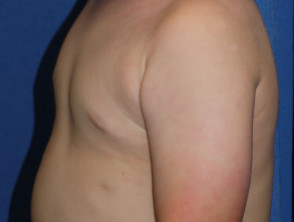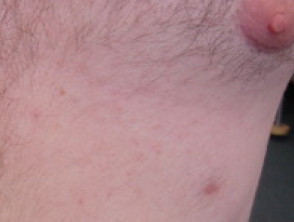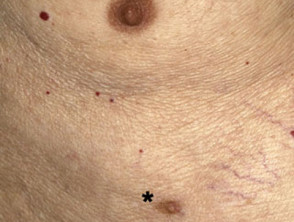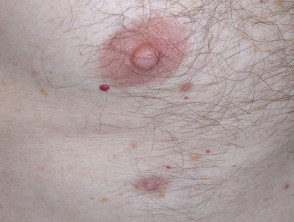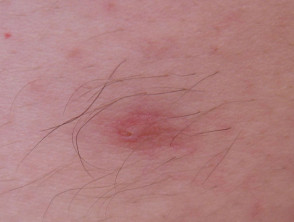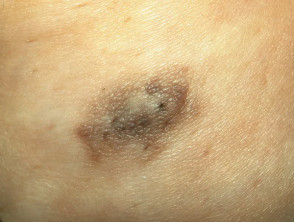What is a supernumerary nipple?
A supernumerary nipple is a minor malformation of mammary tissue resulting in extra nipple(s) and/or associated tissue. It is also known as accessory nipple, third nipple, ectopic nipple, or extra nipple.
A supernumerary nipple is distinct from:
- Polythelia, which is the presence of supernumerary nipples without accessory glandular tissue
- Supernumerary or accessory breasts, which may or may not have nipples.
Supernumerary nipples are congenital, and usually harmless. However, they are influenced by hormones and susceptible to other disease processes.
Who gets a supernumerary nipple?
Supernumerary nipples or breasts are found in up to 6% of the population. They present as either isolated findings or as features of genetic syndromes. These include:
- Ruvalcaba-Myhre syndrome
- Hay-Wells syndrome of ectodermal dysplasia
There have been some reports of an increased risk of urinary tract abnormalities in patients with supernumerary nipples, although this is disputed.
Most isolated cases of supernumerary nipples are sporadic, however they are familial in approximately 6% of reported cases. They exhibit an autosomal dominant pattern of inheritance with incomplete penetrance.
The embryogenesis of supernumerary nipple
Supernumerary nipple is formed early on in the development of the embryo.
Week 4
Mammary ridges form from thickening strips of ectoderm—these are the “milk lines” that extend from the axilla to the groin.
Week 6
Mammary buds develop from downgrowth of epidermis from the ridges.
Week 8
Failure of regression of mammary ridges result in the formation of the supernumerary nipple.
Supernumerary nipples usually occur anywhere along the two vertical milk lines that originate in the axilla, descend through the region where nipples are typically situated, and terminate at the groin. About 5% of supernumerary nipples form outside the milk lines on the skin of the neck, back, vulva or thigh.
What are the clinical features of supernumerary nipple?
A supernumerary nipple is present at birth. It often appears similar to a congenital organoid or melanocytic naevus. Most supernumerary nipples are much smaller than the normal areola and nipple. They may be solitary or multiple, arising on one or both nipple line(s).
They may be pink or brown, and at least the central nipple is elevated off the skin surface. There may be a central dimple. Supernumerary nipples may develop prominent hair at puberty.
If the supernumerary nipple contains glandular tissue, it can enlarge during puberty, swell and become tender premenstrually, and undergo lactation.
Supernumerary nipple
See more images of supernumerary nipple ...
How is a supernumerary nipple diagnosed?
A clinical classification tool is the Kajava supernumerary nipple classification (1915).
- Complete supernumerary nipple – Nipple and areola and glandular breast tissue
- Supernumerary nipple – Nipple and glandular tissue (no areola)
- Supernumerary nipple – Areola and glandular tissue (no nipple)
- Aberrant glandular tissue only
- Supernumerary nipple – Nipple and areola and pseudomamma (fat tissue that replaces the glandular tissue)
- Supernumerary nipple – Nipple only (the most common supernumerary nipple)
- Supernumerary nipple – Areola only (polythelia areolaris)
- Patch of hair only (polythelia pilosa)
Histology provides definitive diagnosis, as it resembles the normal nipple:
- Epidermal thickening
- Mild papillomatosis and basal hyperpigmentation
- Pilosebaceous structures
- Smooth muscle
- Breast ducts
- Sometimes presence of underlying breast tissue
What is the treatment for a supernumerary nipple?
Usually no treatment is required. Surgical removal can be considered for cosmetic purposes or if there is discomfort from lactation or tenderness.
Supernumerary nipples can undergo similar diseases to normal breast tissue. There are reported cases of supernumerary nipples developing:
- Fibroadenoma
- Adenoma
- Cyst
- Abscess
- Mastitis
- Breast cancer
